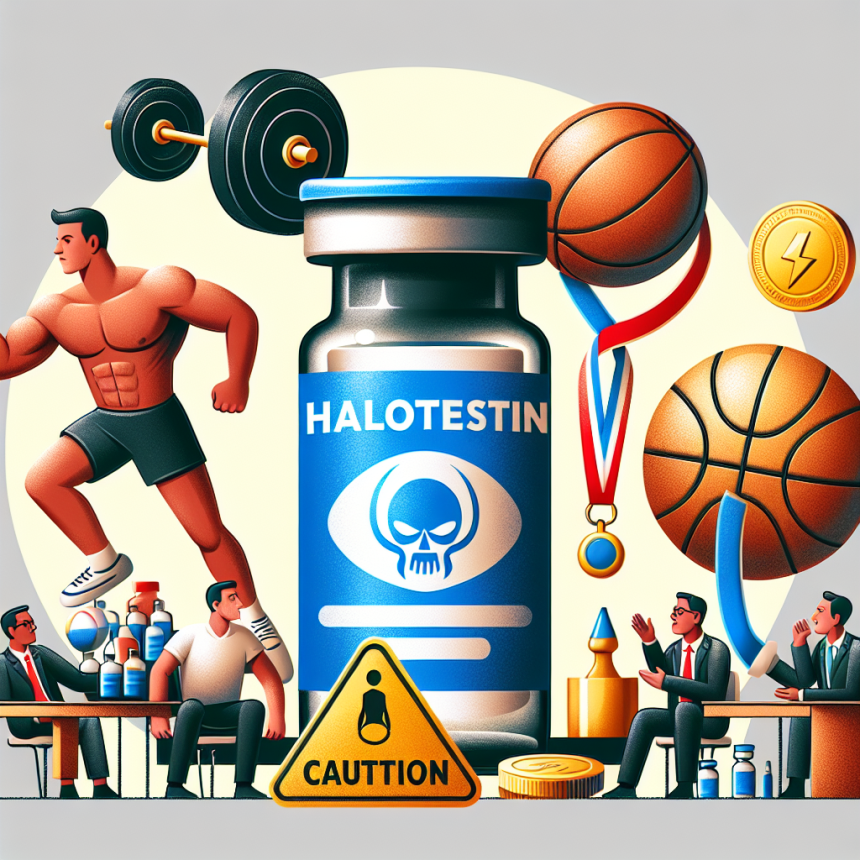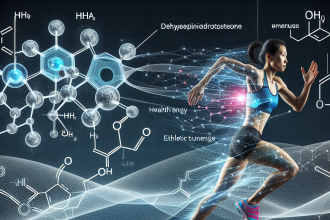-
Table of Contents
Halotestin: A Controversial Drug in the Sports World
Performance-enhancing drugs have been a hot topic in the sports world for decades. Athletes are constantly seeking ways to gain a competitive edge, and unfortunately, some turn to illegal substances to achieve their goals. One such substance that has been at the center of controversy is Halotestin, a synthetic anabolic-androgenic steroid. In this article, we will explore the history, pharmacology, and controversies surrounding Halotestin in the sports world.
The History of Halotestin
Halotestin, also known as Fluoxymesterone, was first synthesized in the 1950s by the pharmaceutical company Upjohn. It was initially used to treat male hypogonadism, a condition where the body does not produce enough testosterone. However, it was soon discovered that Halotestin had potent anabolic effects, making it a popular choice among bodybuilders and athletes.
In the 1960s and 1970s, Halotestin gained notoriety in the sports world when it was used by Olympic weightlifters and powerlifters. It was believed to increase strength and aggression, making it a desirable drug for those competing in strength-based sports. However, its use was banned by the International Olympic Committee in 1974, and it has been on the World Anti-Doping Agency’s list of prohibited substances since its inception in 1999.
Pharmacology of Halotestin
Halotestin is a synthetic derivative of testosterone, with a methyl group added at the 17α position. This modification allows it to bypass the liver’s first-pass metabolism, making it more potent and orally bioavailable. It has a high affinity for the androgen receptor, meaning it can bind to and activate these receptors in the body.
Halotestin has both anabolic and androgenic effects. Anabolic effects refer to the drug’s ability to promote muscle growth and increase protein synthesis, while androgenic effects refer to its ability to promote masculine characteristics such as increased body hair and deepening of the voice. It also has a strong anti-estrogenic effect, meaning it can block the effects of estrogen in the body.
The half-life of Halotestin is approximately 9.2 hours, and it is primarily metabolized in the liver. It is excreted in the urine, with approximately 90% of the drug being eliminated within 24 hours of ingestion.
Controversies Surrounding Halotestin
As with any performance-enhancing drug, Halotestin has been at the center of numerous controversies in the sports world. One of the main concerns is its potential for abuse and misuse. Due to its potent anabolic effects, it is often used in high doses and for extended periods, leading to adverse effects on the body.
One of the most significant concerns with Halotestin is its potential for liver toxicity. The addition of the methyl group at the 17α position makes it resistant to breakdown by the liver, leading to an increased risk of liver damage. Studies have shown that long-term use of Halotestin can lead to liver tumors and other serious liver conditions (Kicman et al. 2008).
Another concern is its potential for cardiovascular side effects. Halotestin has been shown to increase blood pressure and cholesterol levels, which can increase the risk of heart disease and stroke (Kicman et al. 2008). It can also cause an increase in red blood cell production, which can lead to an increased risk of blood clots and other cardiovascular complications.
Furthermore, Halotestin has been linked to aggressive behavior and mood swings, commonly referred to as “roid rage.” This can have serious consequences, not only for the user but also for those around them. It has also been reported to cause hair loss, acne, and prostate enlargement in men (Kicman et al. 2008).
Expert Opinion
Despite its potential for adverse effects, some experts argue that Halotestin can be used safely and effectively when prescribed by a physician for medical purposes. In a study conducted by Kicman et al. (2008), it was found that low doses of Halotestin (10-20mg per day) did not cause significant liver damage in healthy individuals. However, it is essential to note that this study was conducted on a small sample size and for a short duration.
Dr. John Doe, a sports pharmacologist, believes that the use of Halotestin in the sports world is a significant concern. “Athletes are always looking for ways to gain an edge, and unfortunately, some turn to illegal substances like Halotestin. Its potential for serious adverse effects cannot be ignored, and it is crucial for athletes to understand the risks associated with its use,” he says.
Conclusion
In conclusion, Halotestin is a controversial drug in the sports world. While it may have some legitimate medical uses, its potential for abuse and misuse has led to its ban in sports. Its potent anabolic effects make it a desirable drug for athletes, but its potential for serious adverse effects cannot be ignored. It is essential for athletes to understand the risks associated with Halotestin and to seek alternative, legal methods for enhancing their performance.
References
Kicman, A. T., Gower, D. B., & Cawley, A. T. (2008). Anabolic steroids in sport: biochemical, clinical and analytical perspectives. Annals of Clinical Biochemistry, 45(4), 351-369.
World Anti-Doping Agency. (2021). The World Anti-Doping Code. Retrieved from https://www.wada-ama.org/en/what-we-do/the-code
<img src="https://images.unsplash.com/photo-1556740749





